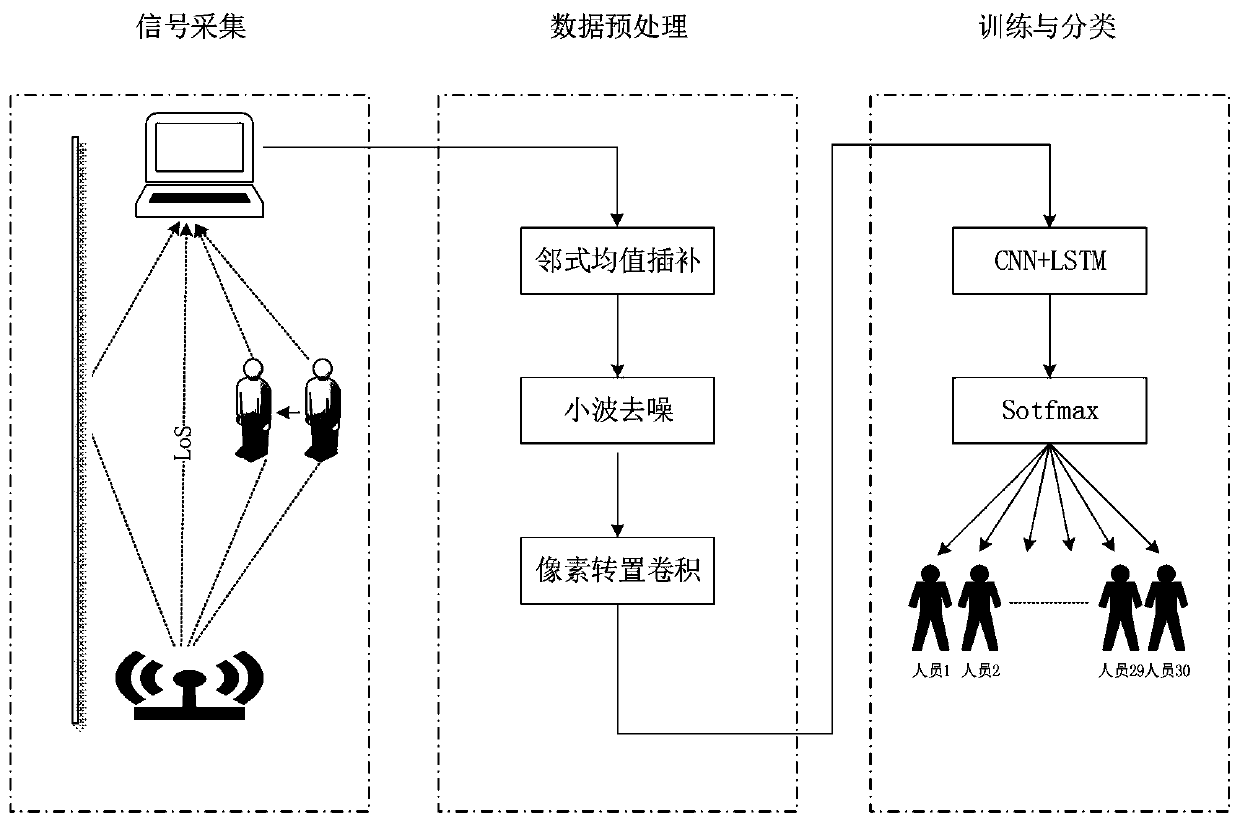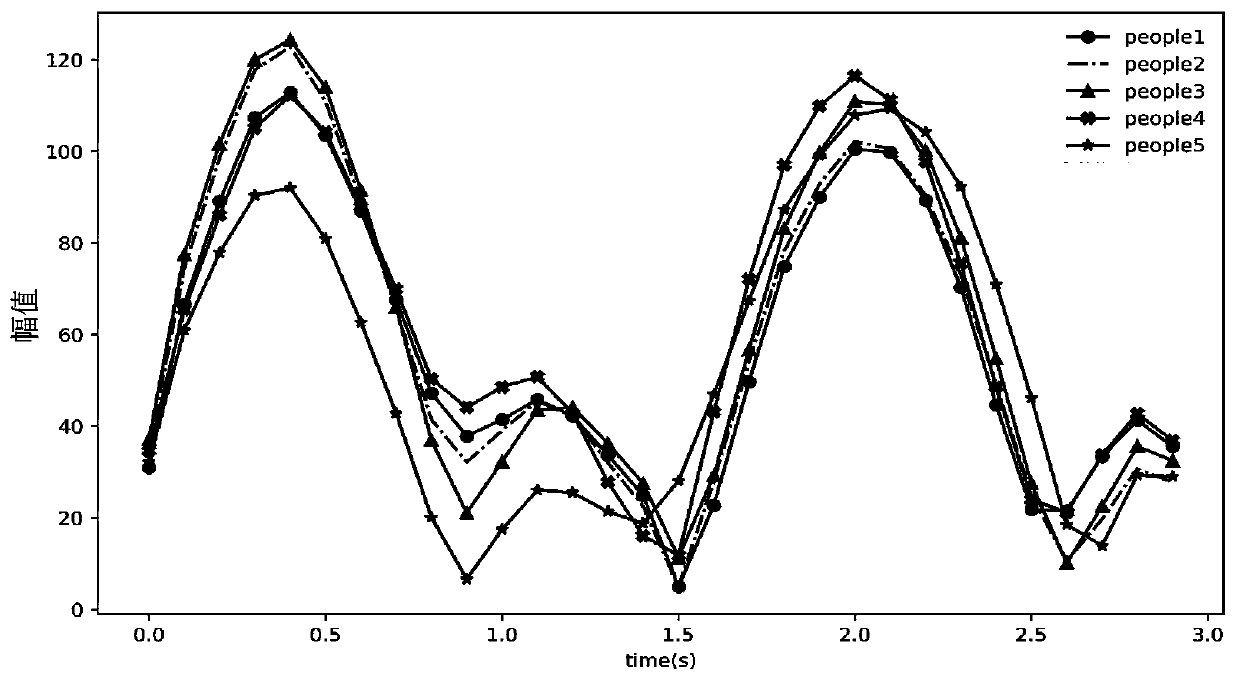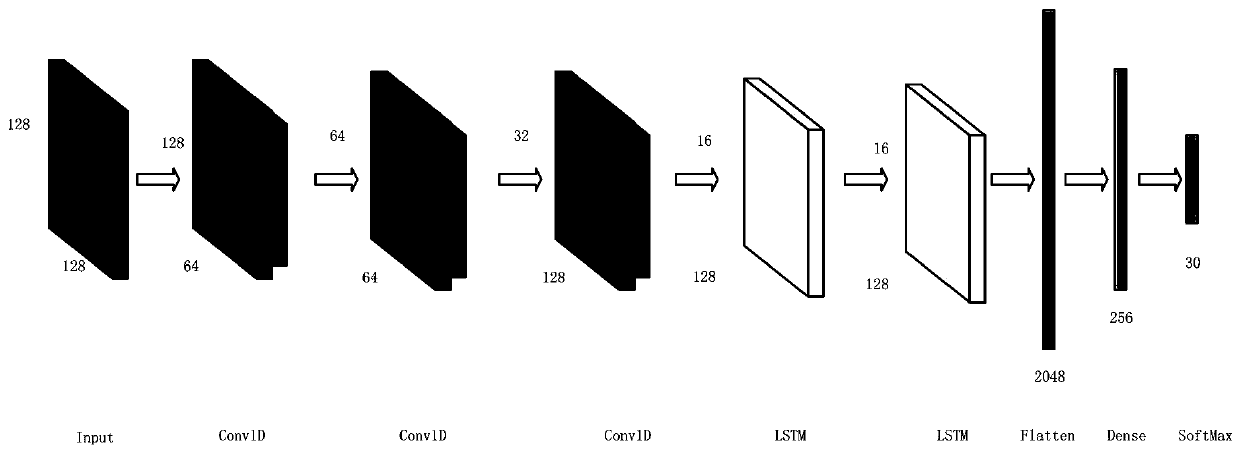WiFi identity recognition method fused with deep learning model
A technology of deep learning and identification, applied in the field of artificial intelligence identification, can solve the problem that shallow classifiers cannot delicately represent the representative mode of biological characteristics of radio frequency signals, and achieve the effect of increasing learning performance
- Summary
- Abstract
- Description
- Claims
- Application Information
AI Technical Summary
Problems solved by technology
Method used
Image
Examples
Embodiment
[0077] The experimental environment of this method is an ordinary TP-LINK-WDR5620 1-antenna router and a Dell notebook equipped with an Intel5300 wireless network card with 3 antennas. ) in turn for 3s, and then use the CSI-tool tool software to extract the CSI data of 20MHz bandwidth on all 30 sub-carriers on the center frequency of 2.4GHz. This data is a 3-dimensional complex matrix of Ntx×Nrx×30, Ntx represents the number of antennas at the transmitting end, and Nrx represents the number of antennas at the receiving end, so the original data becomes a 3×30 2-dimensional complex matrix after dimensionality reduction;
[0078] Calculate the magnitude of this CSI complex matrix to obtain a 2-dimensional CSI magnitude matrix with a size of (300, 90), where 300 represents the time length of each subcarrier, and 90 represents the number of subcarriers. We use each subcarrier as a sample, so the size of the obtained sample is (300, 1);
[0079] Next, perform adjacent mean interpola...
PUM
 Login to View More
Login to View More Abstract
Description
Claims
Application Information
 Login to View More
Login to View More - R&D
- Intellectual Property
- Life Sciences
- Materials
- Tech Scout
- Unparalleled Data Quality
- Higher Quality Content
- 60% Fewer Hallucinations
Browse by: Latest US Patents, China's latest patents, Technical Efficacy Thesaurus, Application Domain, Technology Topic, Popular Technical Reports.
© 2025 PatSnap. All rights reserved.Legal|Privacy policy|Modern Slavery Act Transparency Statement|Sitemap|About US| Contact US: help@patsnap.com



